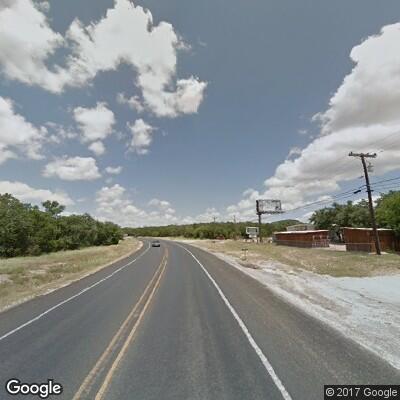
Route Summary
This 239-mile loop takes riders through some of the best scenes the Texas Hill Country has to offer. Starting in Bulverde, you pass through several small towns, including Medina, home of the Medina Apple Store and Love Creek apple orchard. Once the route hits Fredricksburg, there are tons of shops and eateries to stop in, as well as vineyards and the Wildseed Farm. Just before ending in the New Braunfels area, the route runs parallel to Canyon Lake, offering great views on or off the bike..
This route had fatal and incapacitating crashes between 2010 – 2022. In Texas, drivers are not assigned “at fault” in a crash, but law enforcement can assign ‘factors or conditions’ that contributed or may have contributed to a crash. Multiple ‘crash factors and conditions’ can be assigned to one, some, or all vehicles involved in a crash.
The following tables represent data extracted from the Texas Department of Transportation’s Crash Records Information System (TxDOT’s CRIS).
| Safety (2010-2022) | |
|---|---|
| Crashes | |
| Fatalities | |
| Serious Injuries | |
| Top Weather Crash Condition | |
| Top Lighting Crash Condition | |
| Top Road Crash Condition | |
Crash Narrative Summary
The following list is a summary of the crash events and conditions that have been described by officers investigating crashes along this route. The investigating officer provides his/her opinion of how the crash happened and will emphasize or explain, as necessary, any pertinent facts that are not fully explained elsewhere on the crash report. This section is meant to supplement the above data tables by providing further insight and “clues” into what factors and conditions contributed or may have contributed to crashes along this route.
- 10% of crashes involved a motorcyclist colliding with an animal, primarily deer. While riding in the country, avoid riding at dusk when wildlife is prone to come out.
- 22% of motorcyclist operators did not have a valid Motorcycle license.
- 33% of crashes occurred along curves. Remember to control your speed in a curve. Get to the speed you want to maintain before entering the curve.
- 36% of crashes involved another vehicle. In these crashes, 31% of the time the other vehicle involved was another motorcyclist.
- 36% of crashes involved another vehicle. In these crashes, the major factors that contributed to the crash were attributed to the motorcyclist in 84% of the crashes. Most often, riders failed to control their speed and rear-ended other motorcyclists or vehicles on the roadway.
- 64% of crashes were single vehicle crashes. In some crashes, riders advised they had attempted to pass slower or stopped vehicles in a no passing zone. Do not pass other vehicles in pairs or in a group. Only pass other vehicles individually when it is safe to do so. (MSF)
- In some single vehicle crashes, riders advised they ran over standing water, slick spots, or loose gravel on the roadway.
- In the majority of single vehicle crashes, riders were traveling at an unsafe speed or failed to control their speed and traveled off the roadway. Do not grow complacent when riding in rural areas, or areas without heavy traffic.
- In several crashes, the contributing crash factor was listed as “under the influence – alcohol” or “had been drinking.” Remember though that alcohol is not the only drug that affects your ability to ride safely. Whether it is an over-the-counter, prescription, or illegal drug, it may have side-effects that increase the risks of riding. (MSF)
- In several crashes, the tires on the motorcycle appeared to have deflated or lost pressure. Carry a tire repair kit and know how to use it since tire failures can happen outside of cellphone coverage areas. And, check the tires, control functions, lights and electrics, gas, oil, brake fluid levels, and suspension movement regularly.
- For emergency braking, the MSF recommends applying both brakes to their maximum, just short of locking them up. You’ll need to practice this in an open, well-surfaced parking lot. (MSF)
- Several crashes occurred during group motorcycle rides. Plan ahead! If you're taking a new route, use interactive maps and online websites to familiarize yourself with the route you are going to take. Organize before you ride! Decide on hand signals that can mean “let’s stop; need gas; I’m hungry” (MSF). In the event that the rider in front of you goes down, keep your composure and do not get target fixated on the fallen rider! Their crash may cause you to crash if you are not looking ahead at where you want to go.
- Lowering foot pegs from original factory position may increase the potential for the foot peg to strike the ground, especially while negotiating curves. This can cause the motorcycle to ‘lever’ and lift the rear wheel off the ground, causing a crash.
- Motorcycles are harder to see due to their smaller size and there are many human factors that can cause a motorcycle to be missed during a motorists’ check for traffic. Never assume a driver sees you just because they are looking your way.
- In multi-vehicle crashes where the vehicle was assigned the crash contributing factor, the factor was listed as failed to yield right of way – turning left. When approaching intersections where a vehicle is stopped (or slowing) to yield the right of way to you, reduce your speed and cover the brake controls to reduce your reaction time and create greater braking distances.
- 52% of motorcycle operators were not wearing a helmet. Wearing gear is a great way to prevent permanent and painful injuries from a crash. Remember to keep helmets fastened at all times. You won’t have time to fasten it in the middle of a crash.
